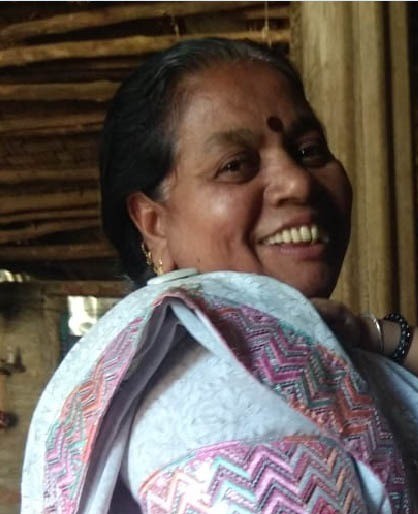Village: Vaghadia
4–6 minutes
“All this (in and around Kevadia colony) has been built on our chest; whatever is there, the circuit house, the bungalow that has been constructed: it is all built on our chest. Our lands, the lands of our forefathers; the government has snatched them away. We were promised that we would be given land for land. But they have not solved any of our problems. These officers who live and work on our lands; they who enjoy privileges; they enjoy [everything] and in return, we have to go and become enslaved to those very officers. We have to go and clean their vessels, mop their homes and wash their clothes. If they had not taken away our lands, and if we had possession of our lands, we could have lived a peaceful life, couldn’t we… We have come to grief because of this dam and the J P Company building the dam. How do we keep our hearth fires burning? ”
Kapilaben Tadvi
Never considered as ‘project affected’ in spite of losing their lands to the Sardar Sarovar Project Colony, the people of the six villages (Gora, Kevadia, Kothi, Limdi, Navagam, Waghadia) affected by the Kevadia colony became the centre of resistance right next to the Dam site in Gujarat and a crucial part of the Narmada Bachao Andolan (NBA) that led the struggle against the SSP. It was difficult to raise as much as a finger at the SSP, leave aside carry out a struggle against it as it was not the state alone which was hostile to the people opposing the project but even parts of the civil society who considered the SSP to be Gujarat’s life line. And yet, the scheduled tribe community, particularly the women of these six Adivasi villages, spearheaded the struggle against the SSP right under the nose of the project conglomerate.
Kapilaben’s oral history therefore is a ‘must listen’. It helps us understand how the adivasi lands of these six villages were acquired for Kevadia colony, how there was a huge influx of officers, government staff, workers and dam builders into this once pristine scheduled tribe area and the impact that it had on the area and its people, how a mammoth infrastructure for the dam was erected on the adivasi lands, how the adivasis were denied any rehabilitation, how they were reduced to slaving away for the colony residents, how their fundamental right to protest and seek justice was crushed, how they continue to wage their long and powerful struggle against the authoritarian state and how all this has impacted the way of life of the dispossessed adivasis. Kapilaben’s interview throws light on the terrible history of dispossession of a scheduled tribe community and the amazing role women have played in one of the key struggles against destructive development in independent India, a struggle which raised an important question about development projects: “Who Benefits? At Whose Cost?” Kapilaben led the struggle from the front and it was from her home that the NBA office functioned for several years.
Her interview helps us understand first-hand the obverse side of this glittering symbol of the “Gujarat Model”, by describing what this large-dam based model of development has done to the people belonging to the scheduled tribe of the same state. The project and its infrastructure including the construction of Kevadia colony completely disrupted the adivasi way of life ruthlessly and this affected the women most severely. What is ironic is that while Kevadia colony is a tourism hotspot today and boasts of the world’s tallest statue and draws worldwide attention, the scheduled tribe communities, on whose lands this popular destination in Gujarat is built, have not even been considered project affected people and have never been rehabilitated. Instead, they continue to be subjected to dispossession of their lands and natural resources and when they protest, they become victims of State repression. But this has not deterred the people, and their struggle continues apace, even after more than 60 years have passed after the acquisition of their lands in 1961.
Kapilaben’s interview proves what Rahul Banerjee rightly says about the adivasi women leaders of the NBA, “Adivasi women activists, are all organic intellectuals who have contributed much to dispel the myth that the NBA was a creation of urban romantics.”
Some of the photographs in this clip are courtesy, Joerg Boethling.

Interview Duration: 2:00:00
Language: Gujarati, Subtitles in English
Subtitles can be switched on and off by clicking ‘CC’ button at the bottom right of the video